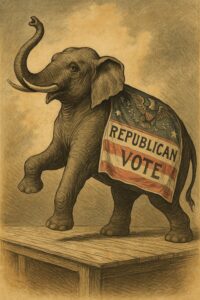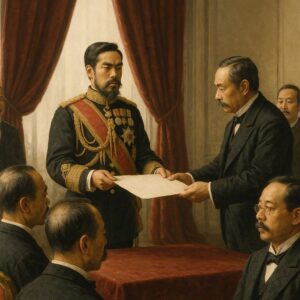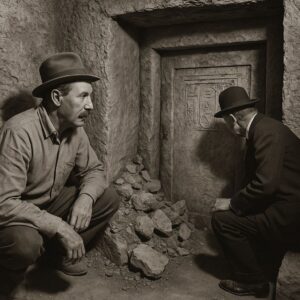
The year 1605 was a tumultuous one in England. The kingdom was still reeling from the recent execution of Mary Queen of Scots on February 8th of that year, and tensions between Catholics and Protestants were running high. Amidst this backdrop of simmering discontent, a group of conspirators hatched a plan to blow up the House of Lords during the State Opening of Parliament, an event typically attended by King James I, his wife Anne, and other prominent members of the government.
The plotters, led by Robert Catesby, a young nobleman with ties to the Catholic underground, had been secretly gathering explosives and planning their attack for months. They had managed to secure a large quantity of gunpowder, which they stored in a cellar beneath the House of Lords, located in Westminster Palace. The plan was to detonate the explosives on November 5th, 1605, when Parliament would be in session, killing not only the king and his entourage but also scores of innocent bystanders.
However, the plot was fraught with risk from the outset. Catesby’s group had recruited a number of sympathizers, including Guy Fawkes, a former soldier who had fought on the side of the Spanish in the Netherlands. Fawkes was tasked with being the point man for the operation, responsible for igniting the fuse that would set off the explosion. His job was to sneak into the cellar beneath the House of Lords and light the fuses connected to the gunpowder.
Fawkes’ role in the plot has become legendary over time, thanks in large part to a series of events that unfolded on the night of November 4th, 1605. According to eyewitness accounts, Fawkes had made several trips into the cellar throughout the day, inspecting the explosives and ensuring they were properly set up for detonation. As night began to fall, he retreated to his lodgings in a nearby house, where he waited anxiously for the signal to ignite the fuses.
Meanwhile, a series of events was unfolding that would ultimately thwart the plotters’ plans. On November 4th, King James I had ordered an emergency meeting with Parliament, which was to convene on the morning of November 5th to discuss matters related to taxation and trade. As a result, the State Opening of Parliament, originally scheduled for November 5th, was postponed until January 1606.
Unbeknownst to Fawkes and his co-conspirators, this last-minute change in plans had significant implications for their operation. Because the House of Lords would not be occupied on November 5th as previously thought, the plotters’ carefully laid plan to blow it up was rendered unnecessary. Furthermore, the decision to postpone the State Opening meant that many prominent members of government, including King James I and his wife Anne, would be absent from Westminster Palace on the day in question.
It is unclear whether Fawkes or his co-conspirators realized the significance of these developments in time. However, as the clock struck midnight on November 5th, 1605, Guy Fawkes made one final trip into the cellar beneath the House of Lords. He lit the fuse connected to the gunpowder, but this decision would ultimately prove fatal to his cause.
As it turned out, a search had been conducted earlier that night by Sir Thomas Knyvet, a loyal member of King James I’s household, who was concerned about reports of suspicious activity in the area. At around 11:45 PM on November 4th, Knyvet and his men burst into the cellar beneath the House of Lords, where they discovered Guy Fawkes hiding amidst the gunpowder. The would-be assassin was armed with a slow-burning fuse and a pistol, which he had likely intended to use in the event that the explosion did not succeed in killing the king.
Knyvet’s men quickly apprehended Fawkes, who was subsequently taken into custody. Over the next few days, further arrests were made as more of the plotters were rounded up by authorities. Robert Catesby, the ringleader, and several other key conspirators managed to evade capture for a time but ultimately met their demise in a shootout with authorities at Holbeach House in Staffordshire on January 8th, 1606.
The failure of the Gunpowder Plot sent shockwaves throughout England. King James I was hailed as a hero by his subjects, and the event marked a turning point in the fortunes of Catholicism in the kingdom. The plot’s aftermath saw increased persecution of Catholics, with many being imprisoned or forced into hiding. Meanwhile, Guy Fawkes’ involvement in the plot cemented his place in history as a symbol of treasonous intent.
In the years that followed, November 5th was commemorated as a day of celebration and remembrance in England. The event became known as Guy Fawkes Night, with bonfires and fireworks lighting up the night sky to mark the occasion. Over time, the tradition has evolved into a more general expression of anti-establishment sentiment, with many using the date as an excuse to protest against government policies or express dissent.
The legacy of the Gunpowder Plot continues to be felt today. In England, November 5th remains a significant cultural event, and Guy Fawkes’ image is still used by activists around the world as a symbol of resistance against authority. The plot’s failure also marked an important moment in the development of English identity, with the country emerging stronger and more united than ever before.
The consequences of the Gunpowder Plot also extended beyond England. In the years that followed, European monarchs began to take greater precautions against potential threats from their own subjects. This led to increased surveillance and a heightened sense of security in royal courts across the continent.
In conclusion, the failure of the Gunpowder Plot marked a pivotal moment in English history. The thwarting of Catesby’s operation not only prevented a catastrophic loss of life but also served as a powerful symbol of the kingdom’s resilience in the face of adversity. As we look back on this defining event, it is clear that its impact continues to be felt today.
The year 1605 was a tumultuous one in England. The kingdom was still reeling from the recent execution of Mary Queen of Scots on February 8th of that year, and tensions between Catholics and Protestants were running high. Amidst this backdrop of simmering discontent, a group of conspirators hatched a plan to blow up the House of Lords during the State Opening of Parliament, an event typically attended by King James I, his wife Anne, and other prominent members of the government.
The plotters, led by Robert Catesby, a young nobleman with ties to the Catholic underground, had been secretly gathering explosives and planning their attack for months. They had managed to secure a large quantity of gunpowder, which they stored in a cellar beneath the House of Lords, located in Westminster Palace. The plan was to detonate the explosives on November 5th, 1605, when Parliament would be in session, killing not only the king and his entourage but also scores of innocent bystanders.
However, the plot was fraught with risk from the outset. Catesby’s group had recruited a number of sympathizers, including Guy Fawkes, a former soldier who had fought on the side of the Spanish in the Netherlands. Fawkes was tasked with being the point man for the operation, responsible for igniting the fuse that would set off the explosion. His job was to sneak into the cellar beneath the House of Lords and light the fuses connected to the gunpowder.
Fawkes’ role in the plot has become legendary over time, thanks in large part to a series of events that unfolded on the night of November 4th, 1605. According to eyewitness accounts, Fawkes had made several trips into the cellar throughout the day, inspecting the explosives and ensuring they were properly set up for detonation. As night began to fall, he retreated to his lodgings in a nearby house, where he waited anxiously for the signal to ignite the fuses.
Meanwhile, a series of events was unfolding that would ultimately thwart the plotters’ plans. On November 4th, King James I had ordered an emergency meeting with Parliament, which was to convene on the morning of November 5th to discuss matters related to taxation and trade. As a result, the State Opening of Parliament, originally scheduled for November 5th, was postponed until January 1606.
Unbeknownst to Fawkes and his co-conspirators, this last-minute change in plans had significant implications for their operation. Because the House of Lords would not be occupied on November 5th as previously thought, the plotters’ carefully laid plan to blow it up was rendered unnecessary. Furthermore, the decision to postpone the State Opening meant that many prominent members of government, including King James I and his wife Anne, would be absent from Westminster Palace on the day in question.
It is unclear whether Fawkes or his co-conspirators realized the significance of these developments in time. However, as the clock struck midnight on November 5th, 1605, Guy Fawkes made one final trip into the cellar beneath the House of Lords. He lit the fuse connected to the gunpowder, but this decision would ultimately prove fatal to his cause.
As it turned out, a search had been conducted earlier that night by Sir Thomas Knyvet, a loyal member of King James I’s household, who was concerned about reports of suspicious activity in the area. At around 11:45 PM on November 4th, Knyvet and his men burst into the cellar beneath the House of Lords, where they discovered Guy Fawkes hiding amidst the gunpowder. The would-be assassin was armed with a slow-burning fuse and a pistol, which he had likely intended to use in the event that the explosion did not succeed in killing the king.
Knyvet’s men quickly apprehended Fawkes, who was subsequently taken into custody. Over the next few days, further arrests were made as more of the plotters were rounded up by authorities. Robert Catesby, the ringleader, and several other key conspirators managed to evade capture for a time but ultimately met their demise in a shootout with authorities at Holbeach House in Staffordshire on January 8th, 1606.
The failure of the Gunpowder Plot sent shockwaves throughout England. King James I was hailed as a hero by his subjects, and the event marked a turning point in the fortunes of Catholicism in the kingdom. The plot’s aftermath saw increased persecution of Catholics, with many being imprisoned or forced into hiding. Meanwhile, Guy Fawkes’ involvement in the plot cemented his place in history as a symbol of treasonous intent.
In the years that followed, November 5th was commemorated as a day of celebration and remembrance in England. The event became known as Guy Fawkes Night, with bonfires and fireworks lighting up the night sky to mark the occasion. Over time, the tradition has evolved into a more general expression of anti-establishment sentiment, with many using the date as an excuse to protest against government policies or express dissent.
The legacy of the Gunpowder Plot continues to be felt today. In England, November 5th remains a significant cultural event, and Guy Fawkes’ image is still used by activists around the world as a symbol of resistance against authority. The plot’s failure also marked an important moment in the development of English identity, with the country emerging stronger and more united than ever before.
The consequences of the Gunpowder Plot also extended beyond England. In the years that followed, European monarchs began to take greater precautions against potential threats from their own subjects. This led to increased surveillance and a heightened sense of security in royal courts across the continent.
One of the most significant legacies of the Gunpowder Plot is the way it influenced the development of modern intelligence gathering techniques. In response to the failed assassination attempt, King James I established the Privy Council’s Committee for Secret Affairs, which was tasked with uncovering and disrupting plots against the monarchy. This committee would eventually evolve into the modern-day MI6, Britain’s national security agency.
The Gunpowder Plot also had a profound impact on the relationship between Catholics and Protestants in England. The event marked the beginning of a period of increased persecution for Catholics, who were viewed with suspicion by the Protestant majority. Many Catholic priests and nobles were forced to flee the country or go into hiding, while others were imprisoned or executed.
Despite these hardships, the Gunpowder Plot also inspired a sense of community and solidarity among English Catholics. In the years that followed, many Catholics began to see themselves as part of a larger movement for reform and reconciliation with the Protestant majority. This trend continued through the 17th century, with the eventual establishment of the Church of England in 1603.
The Gunpowder Plot also had significant economic implications for England. The failed assassination attempt led to increased tensions between Catholics and Protestants, which ultimately affected trade and commerce throughout the kingdom. Many Catholic merchants and traders were forced to flee or go into hiding, while others saw their businesses suffer due to the lack of trust and confidence in the market.
In addition, the Gunpowder Plot had a lasting impact on the English language. The event has been immortalized in literature and popular culture, with many references to Guy Fawkes and his co-conspirators appearing in plays, poems, and songs throughout history. Perhaps most famously, William Shakespeare’s play “Macbeth” contains a scene in which King James I is warned of a potential assassination attempt by the Thane of Cawdor.
In conclusion, the failure of the Gunpowder Plot marked a pivotal moment in English history. The thwarting of Catesby’s operation not only prevented a catastrophic loss of life but also served as a powerful symbol of the kingdom’s resilience in the face of adversity. As we look back on this defining event, it is clear that its impact continues to be felt today.
The Gunpowder Plot serves as a reminder of the dangers of extremism and the importance of tolerance and understanding in a pluralistic society. It also highlights the enduring power of symbolism and the way in which historical events can continue to shape our collective identity long after they have passed into memory.
In recent years, the legacy of the Gunpowder Plot has been remembered and commemorated in various ways. In 2005, the UK government launched a nationwide commemoration of the event, with ceremonies and festivities taking place across the country. Similarly, many cities around the world hold annual Guy Fawkes Night celebrations, which often feature fireworks, bonfires, and other festivities.
However, not everyone has been content to celebrate the Gunpowder Plot in such a way. Some have criticized the use of November 5th as an excuse for anti-establishment sentiment or as a platform for extremist views. Others have argued that the event’s legacy should be remembered in a more nuanced and balanced way, taking into account both the historical context and the ongoing impact on modern society.
In the end, the Gunpowder Plot remains one of the most significant events in English history, marking a turning point in the fortunes of Catholicism in the kingdom and cementing King James I’s reputation as a hero. As we look back on this defining event, it is clear that its legacy continues to shape our collective identity and inform our understanding of the world around us.
In the words of historian Dr. Anthony Milton: “The Gunpowder Plot was a pivotal moment in English history, marking a turning point in the fortunes of Catholicism in the kingdom and cementing King James I’s reputation as a hero. Its legacy continues to shape our collective identity and inform our understanding of the world around us.”
The Gunpowder Plot serves as a reminder that even the most seemingly insurmountable obstacles can be overcome with determination, courage, and resilience. As we reflect on this defining event in English history, let us remember the importance of tolerance, understanding, and compassion in building a more just and equitable society for all.
Related Posts




































